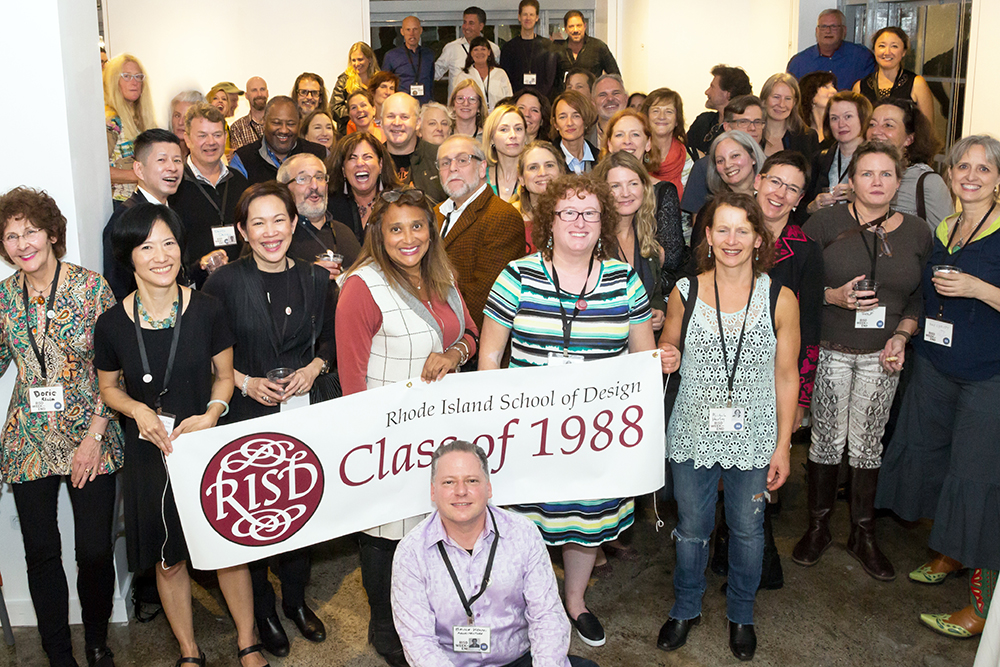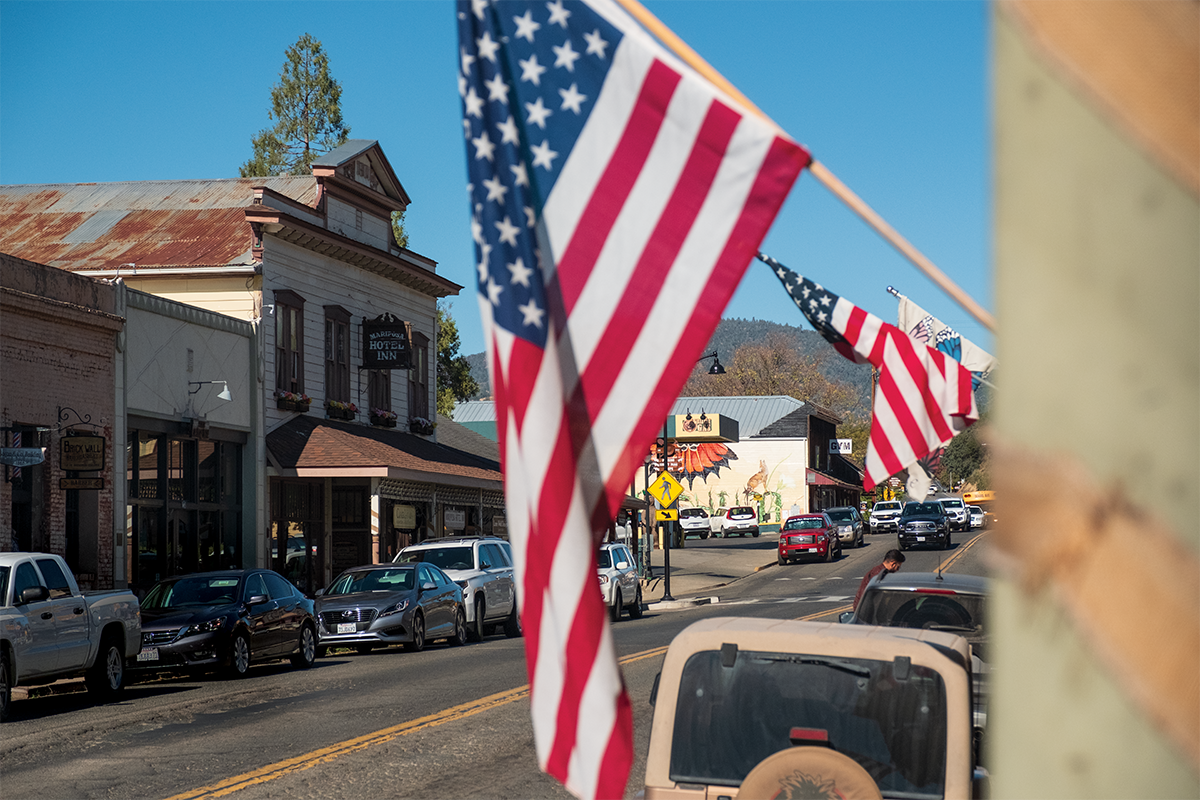
Winter 2024 Cover Story: Home
Artist Jane Kim paints murals outside Yosemite to honor the Southern Sierra Miwuk Nation.
Last autumn, Jane Kim 03 PR painted a mural six blocks away from a house in Mariposa, California, where a sign was affixed to the home that read: “Trump won. I know it. You know it.”
It’s fair to call this Gold Rush town and Yosemite Valley gateway conservative. Mariposa County chose Donald Trump over Joe Biden by 58 percent to 40 percent in the 2020 presidential election, and Trump over Hillary Clinton by 58 percent to 35 percent four years earlier.
Yet certain Mariposa town leaders turned to Kim, a nature-focused San Francisco Bay Area artist, after they won a $951,600 grant from California’s cleanup and beautification program. A collaboration was then formed with Kim, the Southern Sierra Miwuk Nation community, the Mariposa County Arts Council and Mariposa County.
What emerged were two Kim-painted murals in downtown Mariposa: one that features the Miwuk word Uuchum, which means “home,” and a smaller mural, Ahumiti, the Miwuk word for “bear.” Both paintings depict a new vision of the Southern Sierra Miwuk Nation.
The Mariposa-based Native American community, which has been trying since 1982 to gain federal recognition as a Native American tribe, is endemic to Mariposa and Yosemite.
The effort wasn’t without controversy. Some residents wanted the new murals to depict ranching or mining; some argued successfully to keep a downtown mural of a barefoot and bare-chested Native American in front of a tepee.
Sandra Chapman, who serves as chairperson of the Miwuk Nation, laments that the mural stereotypes Native Americans.
“It makes me feel sad that our people have to drive by there and see that ghost of a Native person standing there,” says Chapman, who is 76.
“It’s like, that’s the way they’ve seen us. We were here, but they never saw us. We’ve always been here; we’ll always be here. But when you see something like that—and it doesn’t have any artistry to it, it doesn’t depict our native culture. It doesn’t have any feeling for the Native American people here.”
The mural also reminds her of oppression during her childhood. Chapman recalls that during games of red rover, kids would say, “‘Red rover, red rover, if you’re white come on over.’ I didn’t want to be Indian,” Chapman says.
With Kim’s murals, though, there is now a stark contrast.
“You can see the dark and the light side of what public art can be,” Kim says.
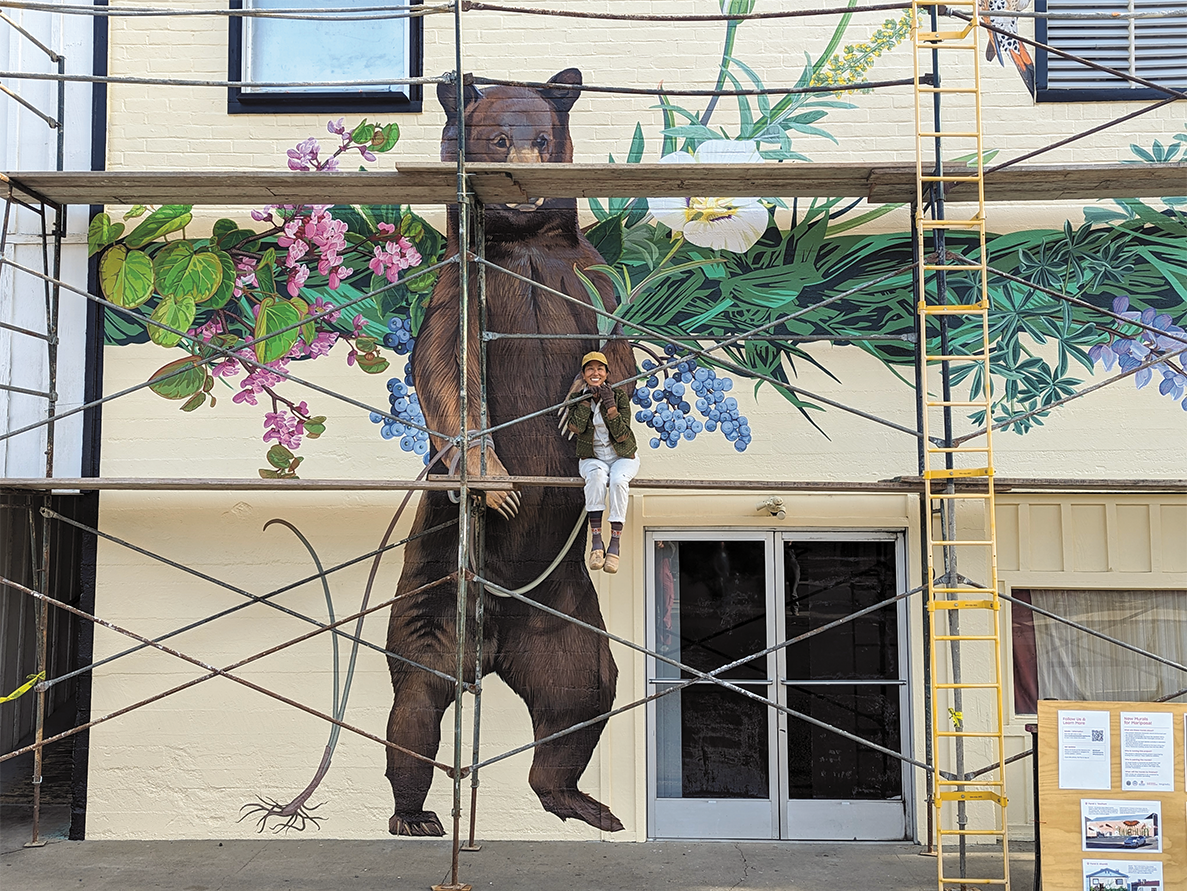
INK DWELL
Kim is the founder of Ink Dwell, a Half Moon Bay studio in California specializing in public installations and environmental campaigns. “We do museum-quality work that’s in the public square,” says Thayer Walker, the studio’s cofounder.
Kim’s public arts projects include the Wall of Birds at the Cornell Lab of Ornithology at Cornell University, in New York state—a 2,800-square-foot painted mural that depicts the 375 million-year migration of 270 species of birds—and The Migrating Mural, which highlights animals along migration corridors, including the monarch butterfly across North America and bighorn sheep in California.
Art captured Kim’s imagination early during child-hood, a fact she reflected on while taking a break from her work in Mariposa in late October. “I think what always inevitably comes back to me is just that feeling of, wow, I’m living my best child-little-girl self,” she says.
Kim developed a sense of mission for her work while at RISD, which she credits for helping her develop her critical thinking, and later while earning a master’s certificate in science illustration from California State University, Monterey Bay. She says she remained devoted early in her career, even when she struggled and was encouraged to try another path.
“Anytime I was feeling strapped for money starting off, everybody would be like, just get a job,” she recalls. “I’m like, no I can’t just get a job; are you crazy? That would be basically like, I might as well just jump off the bridge if you’re telling me to do that. I think there was always an obvious, almost life-or-death, ‘I’m doing this.’”
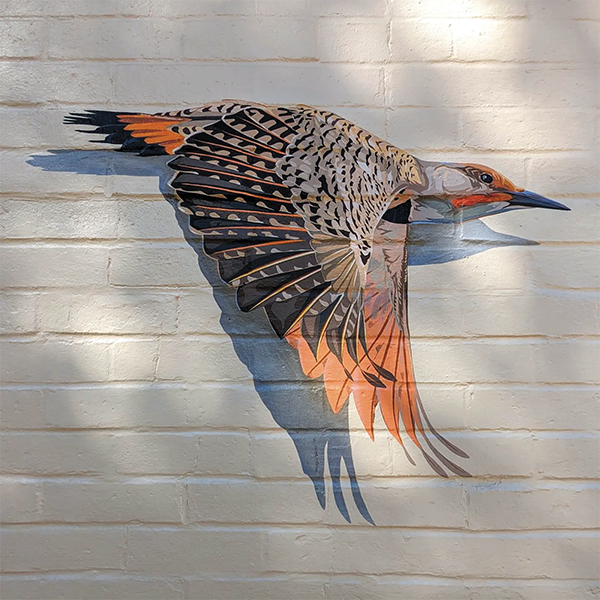
THE CALL FROM MARIPOSA
Mariposa County, which counts some 630 Native Americans among its 17,000 residents, celebrates its gold-mining heritage. The California State Mining and Mineral Museum is on Highway 49. The Mariposa County Visitor Center offers a Gold Mine Escape Room attraction (visitors solve puzzles before the mine explodes). Just off Highway 140, the Mariposa Museum & History Center celebrates the Gold Rush, though it has a Miwuk wing as well.
A man panning for gold is featured on a mural on the side of the Pizza Factory restaurant downtown, the one some residents fought to preserve. Also shown on the Pizza Factory mural are a California grizzly, an American flag—and, in sepia, the aforementioned barefoot and bare-chested Native American in front of a tepee.
The search for gold during the California Gold Rush of 1849 led to thousands of Miwuk being killed or dying of starvation.
When Mariposa County won the California Department of Transportation grant for its project to upgrade the town’s northern and southern gateways on Highway 120, the areas that became Kim’s two murals were central features.
“I just see public art as foundationally human,” says Ben Goger, a development specialist with Mariposa County who has lived in the county for 40 years. “Just as people have a need for food and people have a need for shelter and people have a need for clean water, people have a need for expression, and it’s often left out of civic planning.”
Goger’s sister, Cara Goger, executive director of the Mariposa Arts Council, was instrumental in choosing Kim to do the murals, largely because of Ink Dwell’s emphasis on nature. They agreed, after stakeholder sessions were held in the community, that the focus would be nature and the Miwuk.
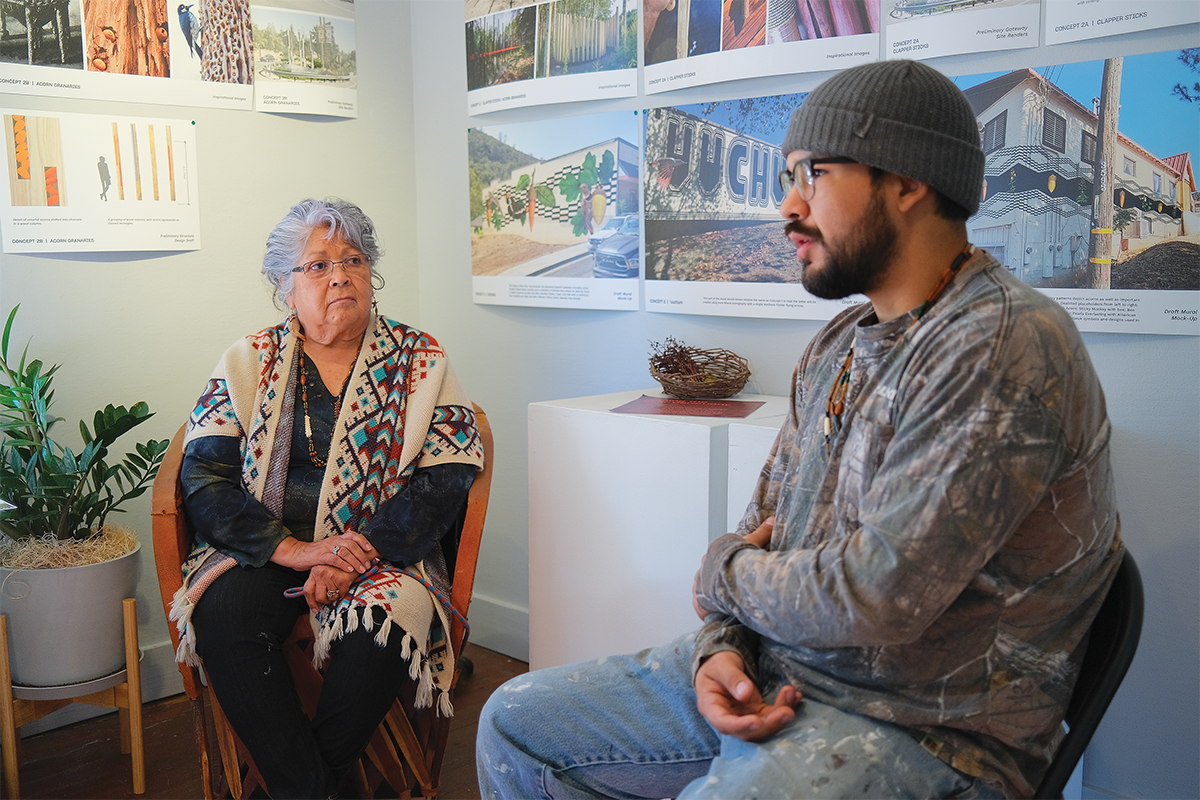
“It made this narrative that surrounds the Miwuk not just historical,” Cara Goger says. “When we think about indigenous cultures, there’s often a lot of erasure that we kind of attach to indigenous communities. But the reality is, indigenous communities are very much woven into contemporary communities today,” Goger says, noting the work the Miwuk is currently engaged in to help mitigate wildfires and restore landscapes.
“The hope is that this artwork celebrates and explores Southern Sierra Miwuk Nation indigenous lifeways, not just in a historical lens, but through a contemporary and even future-facing lens.”
The main mural, about 100 feet long and 20 feet wide, next to the Grizzly Gas station, as mentioned, features the Miwuk word Uuchum (home) and things revered by the Miwuk, including the fanned tail of the Northern flicker, a bird whose features are important in ceremonial regalia; the white mariposa lily; bright-green bunchgrass; and three coyotes. (Miwuk elders say that in the beginning the Earth was inhabited only by animals and that the coyote created the Miwuk.)In the background is a map of Mariposa. Kim and a crew of five spent most of October painting it.
The smaller mural, Ahumiti (bear), honors the Miwuk’s reverence for the bear and includes the lily and other flowers in braided grass that “is symbolic of human presence,” Kim says. “We are not separate from nature.” That mural was finished in November; in total, painting the two murals took a little more than six weeks.
“There’s a huge emphasis on the fact that [the Miwuk people] are here; they are present; they are not relics—they are living,” Kim says. The murals are an “amazing opportunity, where I’ve been able to marry cultural and humanitarian subject matter with the natural world in a way that I’ve never had an opportunity to address before.”
IMPORTANCE TO THE MIWUK
The Miwuk Nation is continuing its quest for recognition from the U.S. Department of the Interior’s Bureau of Indian Affairs. A final decision is awaited on the agency’s proposed finding, issued in 2018, to deny the application. The agency says the nation did not meet a requirement that the “predominant portion of the petitioning group comprises a distinct community and has existed as a community from historical times until the present.”
The nation argues that its ancestors signed treaties with the federal government during the Gold Rush, but the treaties “were hidden away and left unratified,” leaving the nation without land. The nation says that being federally recognized as a tribe would give it sovereignty rights and access to health benefits, scholarships and other funding.
Chapman isn’t “hopeful” about the federal government recognizing the Miwuk Nation.
But Kim’s murals bring hope.
“I hope that (non-Miwuk) people see the pride that we have for ourselves,” Chapman says of the murals. “It’s a healing for our people. It’s going to make our people proud.”
Aanthony Lerma, 26, the Miwuk’s stewardship coordinator, says the murals “represent resilience, fortitude and community. The murals show what can happen to a community when we decide to come together to heal traumas from the past.
“The murals helped create a change we’ve been wanting to see in Mariposa for a long time—the change toward being one community.”
Says Kim: “This is home to many people now, and part of it is reminding people that this has always been home to a nation of people that have been pushed out. So, it’s kind of this beautiful full-circle story.”

Members of Kim’s mural crew: Chelsea Roberts, Jolene Russell, Sami Chang, Ellie Gainey and Clay River.
Words by Tom Kertscher. Photos by Helder Mira.

